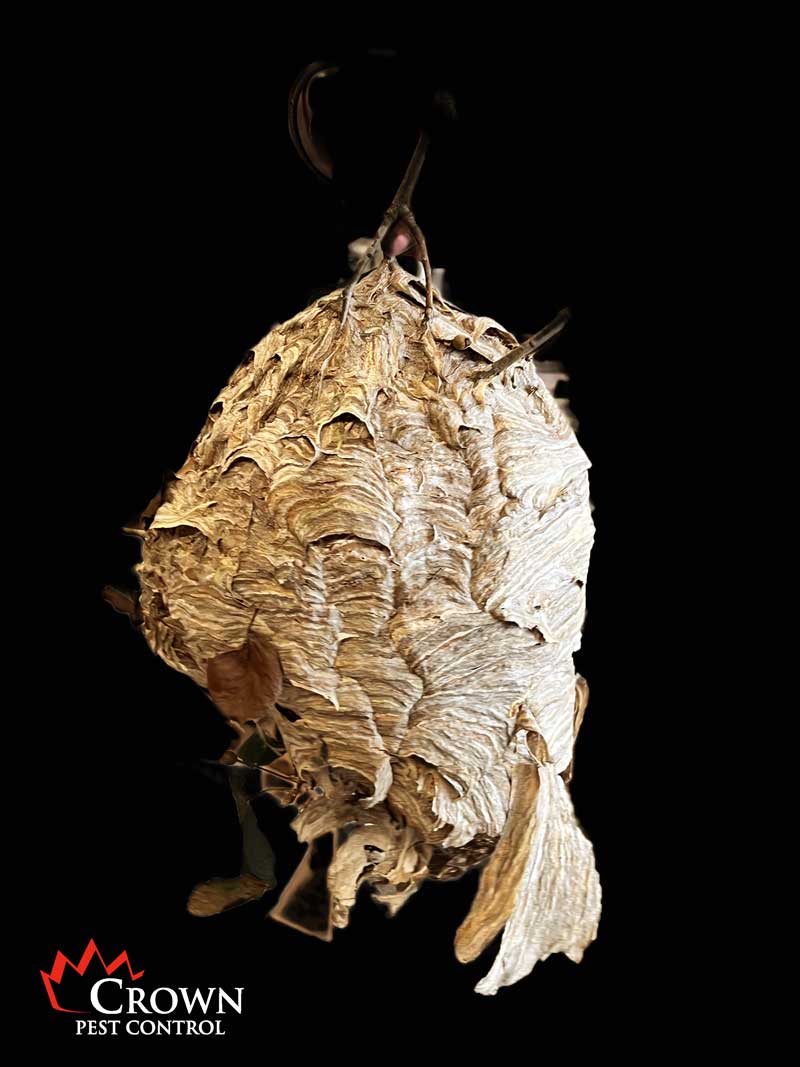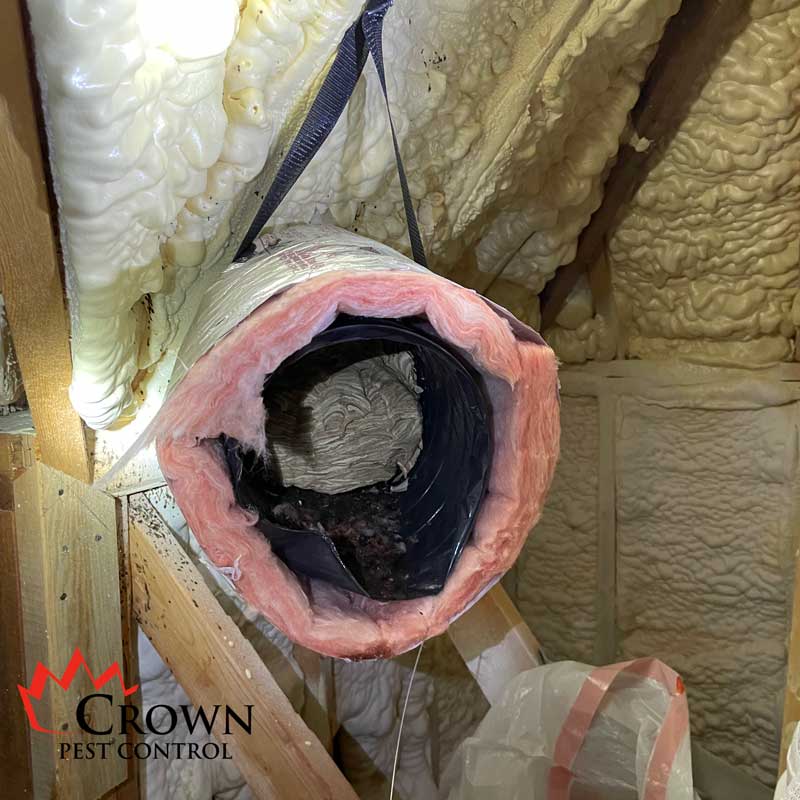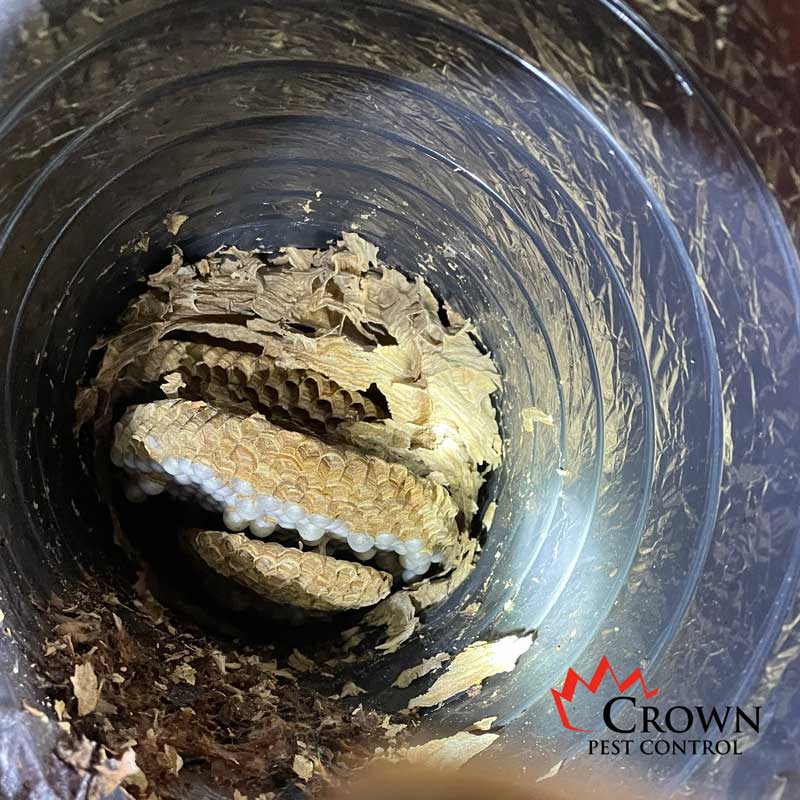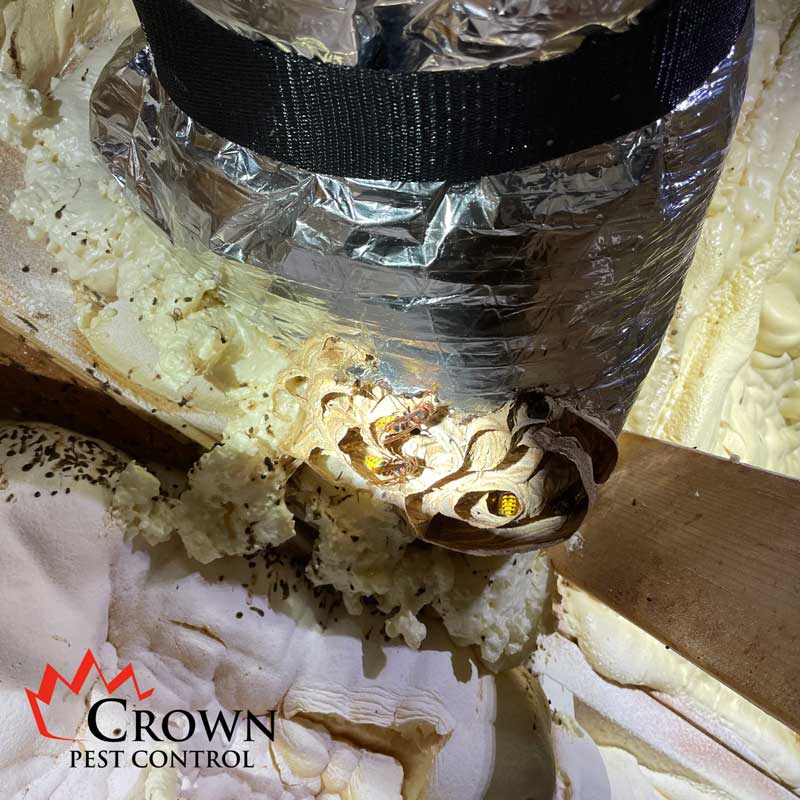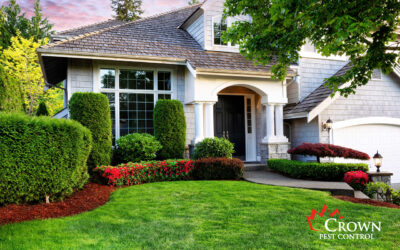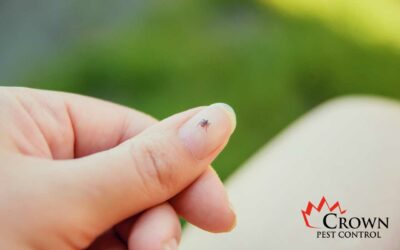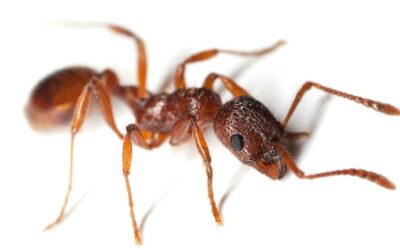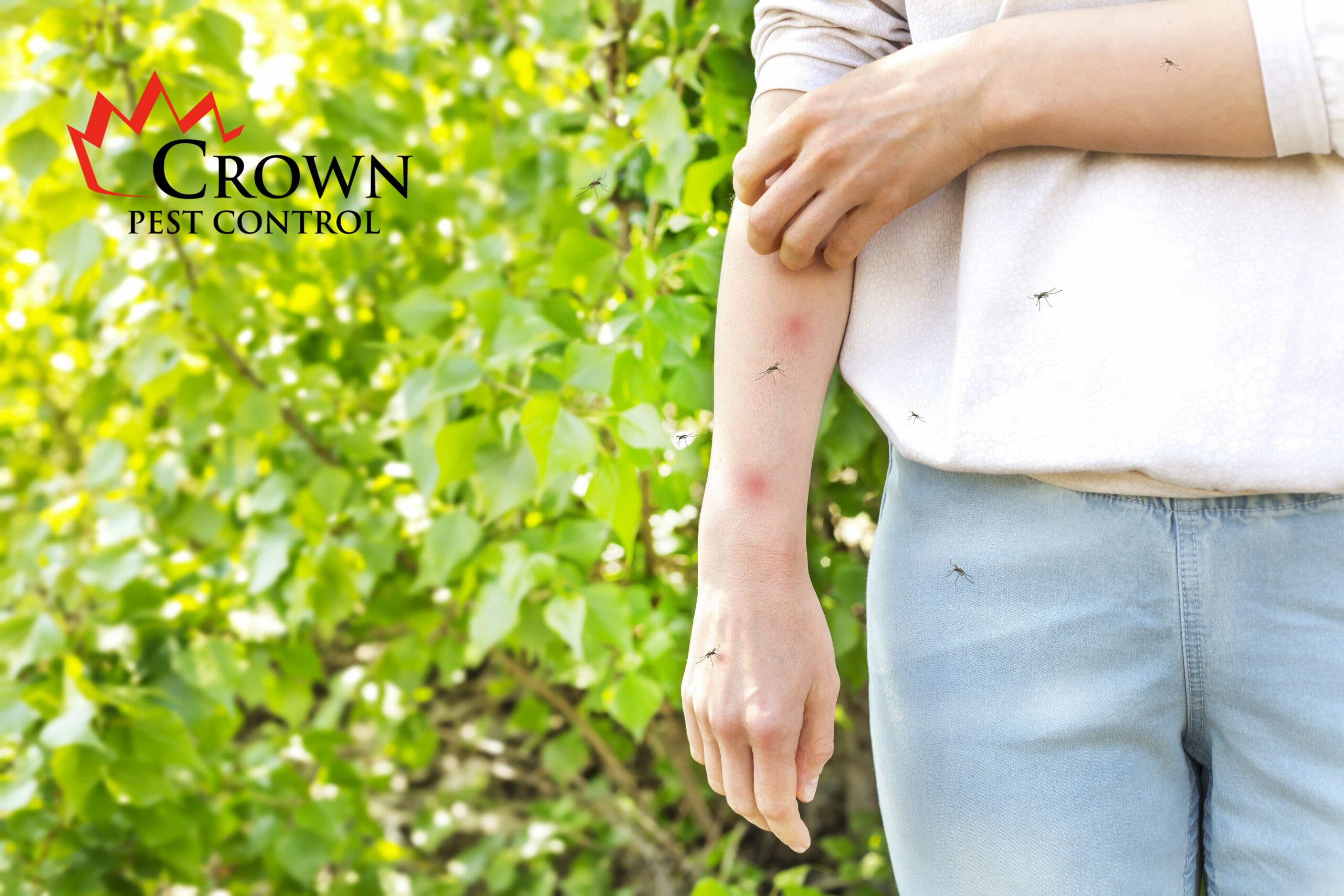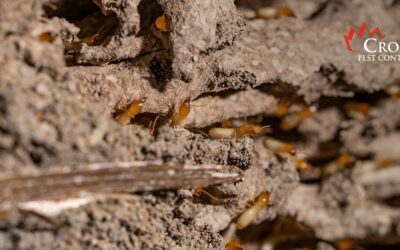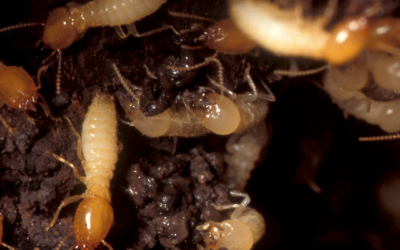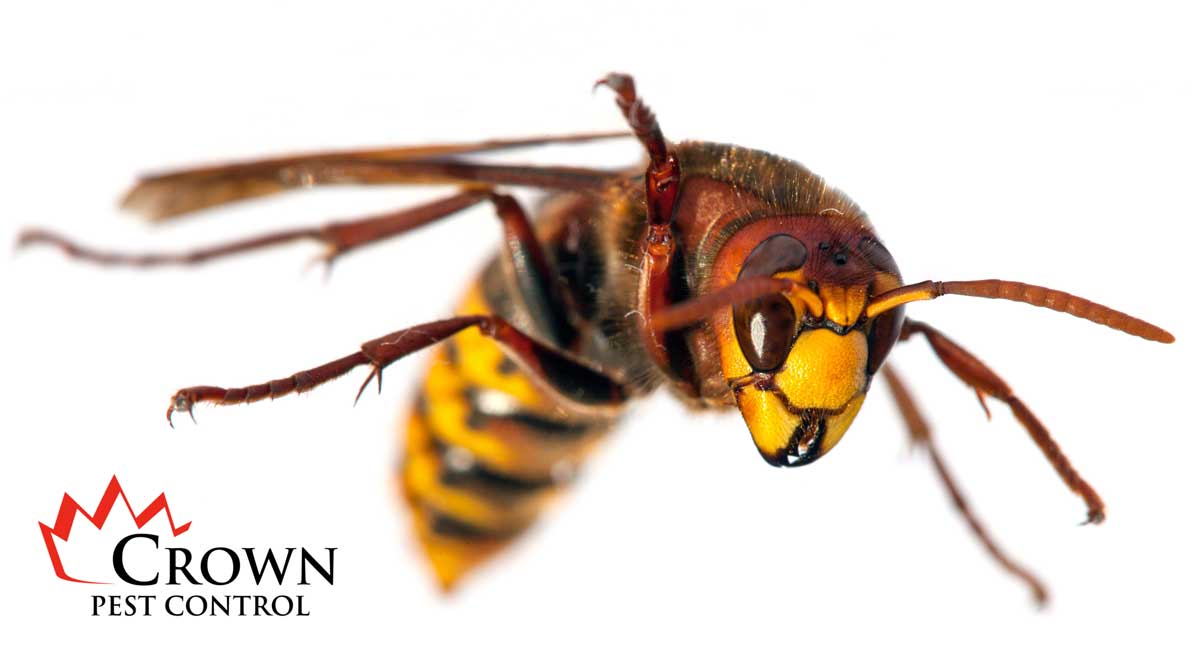
European Hornets in Charlotte NC:
What You Need To Know
If you’re a homeowner in Charlotte, North Carolina, it’s important to be aware of the dangers of European hornets. These pests can cause significant damage to your property and should be removed as soon as possible. Read on for more information about European hornets and what to do if you encounter them.
What are European hornets and what do they look like
The European hornet is a large, orange, and black hornet that is native to Europe and parts of Asia. The species was introduced in the 1800s to North America. European hornets are orangish-brown with black stripes, and they have yellow faces and legs. With an appearance similar to yellow jackets, they are about 1.5 inches long, making them slightly larger than the common wasp. European hornets are most active at night when they congregate around lights. During the day, they rest in their nests, which are usually located in hollow trees or other dark, sheltered areas. Check out NCSU to learn more about European hornets.
These hornets are beneficial predators of other insects, but they can also be a nuisance if they build their nests near human habitations. If you see a European hornet, it is best to leave it alone and contact Crown Pest Control to have it removed.
How European hornets build their nests
Hornet nests are one of the marvels of the insect world. The European hornet (Vespa crabro) builds its nests from chewed wood pulp, which it mixes with saliva to create a paper-like material. The hornets begin by constructing a small, enclosed space called a brood cell, in which the queen lays her eggs. Once the eggs hatch, the larvae are fed chewed-up bits of wood until they reach adulthood. At this point, the hornets begin to work on enlarging the nest, adding new cells, and widening the entrance. As the nest grows, so does the colony, eventually reaching a size of several hundred hornets. The nests are usually built in trees or bushes, but they can also be found in attics and other sheltered areas. European hornets are not aggressive and will only sting if their nest is threatened. However, their stings are very painful and can be dangerous to people who are allergic to bee stings.
European hornet nest in duct work
While most hornet nests are located in trees or bushes, ductwork can provide an equally suitable home. Check out these images of a nest in a local Charlotte home.
If you find a hornet nest on your property, it’s important to contact the professional at Crown Pest Control.
What to do if you find a European hornet’s nest on your property?
If you find a European hornet’s nest on your property, there are some important things to keep in mind. First, European hornets are not naturally aggressive and will only sting if they feel threatened. However, their stings can be painful and cause swelling. Second, while it is possible to remove a European hornet’s nest on your own, it is preferable to call a pest control professional like Crown Pest Control. We have the proper equipment to safely remove the nest, and at Crown Pest Control, we are also able to treat the area to prevent future nesting. If you do decide to remove the nest yourself, be sure to use caution and wear protective clothing. European hornets are most active at night, so it is best to attempt removal during the day.
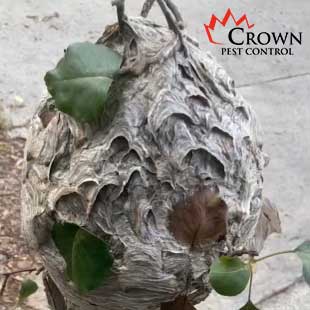
European hornets can be a nuisance if they build their nests near human habitations. If you see a European hornet, it is best to leave it alone and contact Crown Pest Control to have it removed. Crown Pest Control has the proper equipment to safely remove the nest.
Not sure what insect you are dealing with? Check out our pest library to learn more about Charlotte’s native pests.
Crown Pest Control Action Plan
Step 1: Inspection
The First step in effectively addressing a pest problem is to inspect the property. Our team member will identify potential entry points where pests may gain access and pinpoint harborage areas where they tend to hide or nest. They also determine the type of pest and the severity of the pest problem. This assessment sets the groundwork for targeted and tailored pest control measures.
Step 2: Initial Treatment
The Second is the initial treatment of the property by one of our trained service technicians. We utilize the most effective materials to treat your pest problems. Our treatment includes the critical areas inside and outside the house. Areas like the kitchen, storage spaces, garages, and other harborage areas - where bugs live, breed, and hide.
Step 3: Maintenance
The Third step is implementing an ongoing maintenance program such as Crown Select to prevent future generations of insects from invading your home or business. This preventative approach outside will prevent future insects from invading the inside of your home or business. This is what we call “Peace of Mind.”
Rodents, a Concern for Homeowners
Rodents are a concern for homeowners. From damage to disease, rodents can be quite the headache. Read on to learn more!
5 Essential Tips about Ticks
Ticks are small, parasitic creatures that are part of outdoor life. Read on to learn essential tips about ticks.
Are All Ants Bad? The Truth About These Tiny Creatures.
The short answer is no. Read on to learn about two very different types of ants in the Carolinas
Important Types of North Carolina Mosquitoes
North Carolina is home to 60 different species of Mosquitoes. Read on to learn more.
Popular Termite Treatments in Charlotte
What to learn about termite treatments in Charlotte? Read on!
Termite Season
It’s that time of year when the rainy weather brings out termite swarms. Find out how to spot them and what to do next.

